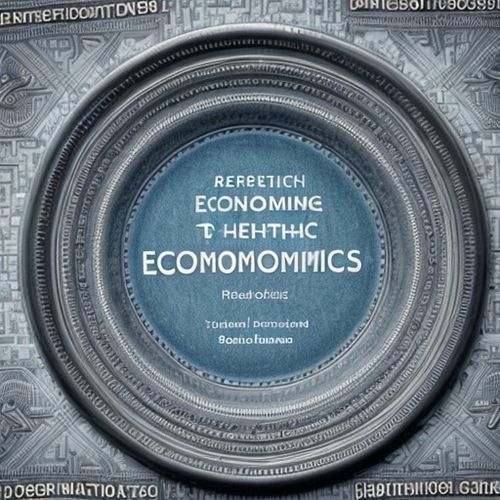The corporate landscape continues to witness an unprecedented wave of mergers and acquisitions as companies seek strategic pathways for growth in an increasingly complex business environment. These transactions represent more than just financial maneuvers—they embody fundamental shifts in market power, competitive positioning, and organizational identity. While the promise of accelerated expansion and enhanced capabilities drives many deals forward, the road to successful integration remains fraught with challenges that test even the most experienced leadership teams.
Strategic Imperatives Behind M&A Activity
Corporate leaders pursue mergers and acquisitions for diverse strategic reasons that often extend beyond simple growth metrics. The quest for market dominance frequently tops the agenda, particularly in industries undergoing rapid consolidation. When two major players combine forces, they can achieve critical mass that allows them to set industry standards, influence pricing structures, and control distribution channels more effectively. This strategic calculus explains why we see waves of M&A activity in sectors like telecommunications, pharmaceuticals, and financial services where scale advantages prove decisive.
Technological disruption has emerged as another powerful driver of deal-making activity. Traditional companies frequently find themselves acquiring innovative startups not just for their products, but for their talent and cultural approaches to problem-solving. These "acqui-hire" transactions allow established firms to rapidly absorb new capabilities while neutralizing potential competitive threats. The tech sector particularly exemplifies this trend, with major platforms routinely snapping up emerging competitors before they achieve market maturity.
Valuation Complexities in Modern Transactions
Determining appropriate valuation remains one of the most contentious aspects of any merger or acquisition. Traditional discounted cash flow analysis often falls short in capturing strategic premiums that buyers willingly pay for synergistic opportunities. The rise of intangible assets—from proprietary algorithms to customer datasets—has further complicated valuation methodologies. Many deals now incorporate elaborate earn-out provisions and stock-based compensation structures to bridge valuation gaps between buyers and sellers.
Market timing plays an outsized role in transaction valuations, creating windows of opportunity that savvy executives learn to recognize. The difference between acquiring a company during an industry downturn versus at peak valuation can determine whether a deal creates or destroys shareholder value. This timing dynamic explains why we frequently see M&A waves corresponding with economic cycles, as cash-rich companies seize opportunities to acquire distressed assets during downturns.
Integration Challenges That Make or Break Deals
While the announcement of major transactions typically generates headlines and analyst attention, the real work begins after the deal closes. Cultural integration represents perhaps the most underestimated challenge in merger success. When organizations with distinct histories, values, and operating models combine, the resulting friction can derail even the most strategically sound transactions. Smart acquirers now invest heavily in cultural due diligence during the pre-merger phase to identify potential fault lines.
Technology integration presents another formidable obstacle, particularly when combining legacy systems with modern platforms. The cost and complexity of merging IT infrastructures frequently exceed initial projections, creating operational bottlenecks that hamper realization of anticipated synergies. Forward-thinking companies now establish dedicated integration teams that begin planning system harmonization well before deal completion.
Regulatory Hurdles in an Era of Scrutiny
Antitrust concerns have returned to center stage in major transactions as regulators worldwide adopt more assertive stances toward market concentration. What might have passed regulatory muster a decade ago now faces intense scrutiny, particularly in technology and healthcare sectors. Companies now must navigate an increasingly complex web of international regulations, with different jurisdictions applying distinct standards for market dominance.
The extended timelines required for regulatory approvals introduce significant uncertainty into deal execution. Some transactions require divestiture of key assets to satisfy competition concerns, fundamentally altering the strategic rationale behind the original deal. This regulatory environment demands that companies develop sophisticated government relations capabilities as part of their M&A toolkit.
Human Capital Considerations in Transaction Success
Workforce integration remains one of the most delicate aspects of any merger or acquisition. The uncertainty surrounding organizational restructuring and job security can trigger talent drain at precisely the moment when companies need stability. Retention bonuses and clear communication strategies help mitigate this risk, but cultural clashes between merging organizations often lead to voluntary departures of key personnel.
Leadership alignment presents another critical human factor. When two executive teams with different management philosophies attempt to combine operations, power struggles frequently emerge that can paralyze decision-making. Successful integrations typically involve careful attention to organizational design, with clear delineation of roles and responsibilities established early in the process.
Financing Structures in Modern Deal-Making
The financing landscape for mergers and acquisitions has evolved significantly in recent years. While all-cash deals still dominate many sectors, stock swaps have gained prominence as companies seek to preserve cash reserves. Complex financing packages now frequently combine multiple instruments—from convertible notes to contingent value rights—to structure transactions that appeal to both buyers and sellers.
Private equity continues to play an outsized role in M&A markets, accounting for nearly 40% of total deal volume in some sectors. The rise of continuation funds and other innovative structures allows sponsors to maintain ownership of quality assets while providing liquidity to investors. This trend has created a robust secondary market for corporate assets that shows no signs of slowing.
Cross-Border Transactions in a Fragmented World
Globalization of M&A activity continues despite rising geopolitical tensions and protectionist policies. Companies pursuing cross-border deals now face additional layers of complexity related to national security reviews, foreign investment restrictions, and conflicting regulatory regimes. The due diligence process for international transactions has expanded to include comprehensive assessments of political risk and supply chain vulnerabilities.
Currency fluctuations add another dimension of complexity to cross-border deals, requiring sophisticated hedging strategies to mitigate exchange rate risks. Some acquirers now structure transactions with currency collars or other protective mechanisms to insulate themselves from volatile forex movements during extended closing periods.
ESG Considerations Reshaping Deal Criteria
Environmental, social, and governance factors now weigh heavily in M&A decision-making. Acquirers conduct thorough ESG due diligence to identify potential liabilities related to carbon footprints, labor practices, or corporate governance structures. Deals that might have sailed through approval processes a decade ago now face intense scrutiny from stakeholders concerned about sustainability and ethical business practices.
The rise of ESG-focused investing has also created new opportunities for strategic buyers. Companies with strong sustainability profiles command valuation premiums, while those with poor ESG track records often find themselves excluded from consideration regardless of financial metrics. This shift has prompted many organizations to address ESG weaknesses preemptively to maintain attractiveness as potential acquisition targets.
Post-Merger Performance and Long-Term Value Creation
Ultimately, the success of any merger or acquisition must be measured by its ability to create sustainable long-term value. Studies continue to show that a significant percentage of deals fail to deliver expected returns, often due to integration failures rather than flawed strategic rationale. Companies that excel at M&A tend to view transactions as the beginning rather than the end of value creation processes.
The most successful acquirers develop institutional capabilities around deal identification, execution, and integration. They create playbooks based on lessons learned from previous transactions and maintain dedicated teams that specialize in various aspects of the M&A lifecycle. This institutional knowledge becomes particularly valuable during periods of intense deal activity when companies risk spreading their management teams too thin across multiple integrations.
As the corporate landscape continues to evolve at breakneck speed, mergers and acquisitions will remain essential tools for companies seeking to adapt and grow. Those organizations that approach M&A with clear strategic vision, disciplined execution, and realistic expectations about integration challenges will be best positioned to turn transactions into genuine competitive advantages. The difference between success and failure often lies not in the deal itself, but in the months and years of careful work that follow the celebratory announcements.

By Samuel Cooper/Apr 10, 2025

By Grace Cox/Apr 10, 2025

By Emily Johnson/Apr 10, 2025

By John Smith/Apr 10, 2025

By Ryan Martin/Apr 10, 2025

By Ryan Martin/Apr 10, 2025

By Joshua Howard/Apr 10, 2025

By Eric Ward/Apr 10, 2025

By Christopher Harris/Apr 10, 2025

By Sophia Lewis/Apr 10, 2025

By George Bailey/Apr 10, 2025

By Michael Brown/Apr 10, 2025

By Joshua Howard/Apr 10, 2025

By Lily Simpson/Apr 10, 2025

By Emma Thompson/Apr 10, 2025

By William Miller/Apr 10, 2025

By Samuel Cooper/Apr 10, 2025

By George Bailey/Apr 10, 2025